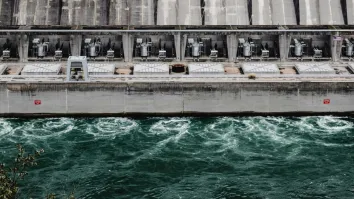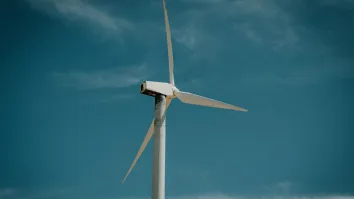Tailoring Climate Innovation in Southeast Asia
By Stefanie Khaw and Aufar SatriaGlobal momentum is building to achieve net zero in greenhouse gas (GHG) emissions—and to do so more quickly than previously envisioned. Getting there will require unprecedented levels of innovation. Some estimates, such as the P4 pathway defined by the Intergovernmental Panel on Climate Change (IPCC), show that today’s technologies have the potential to reduce global emissions by about two-thirds. More innovation-driven projections—such as IPCC’s low-energy demand pathway, P1—do not bank on any new technologies but instead assume radical business model and policy innovation.
The need to develop and deploy these new technologies and operating models is more urgent than ever, but evidence is clear that doing so can come with positive economic benefits that further amplify the case for action. If we’re to realise the greatest value from these efforts, we need to ensure that the solutions we champion are the right ones for the local operating landscape.
Invaluable efforts offer genuinely valuable returns
As of 2019, net-zero pledges covered economies accounting for around 16% of global GDP. Fast-forward to 2022, and net-zero targets now cover approximately 90% of global GDP.
This global net-zero transformation can unlock real value for visionary companies. Green champion pioneers are already reaping the benefits of this pressing global need, with green leaders generating shareholder returns at levels similar to technology firms such as Amazon, Alphabet, and Facebook.
Green champion exemplars such as Enel Group, Iberdrola, Neste, NextEra Energy, and Ørsted generated annual total shareholder returns of ~30%, with those of second-generation green champions such as Tesla ranging from almost 70% to 80%.
We need to build the right conditions for success
The speed and scale of the energy transition requires several enablers. Looking out across the international landscape, we have observed four key pillars of transition—ecosystem, investment models, policy, and entrepreneurship.
Ecosystem approaches are a particularly vital driver in realising climate innovation. These ecosystems encompass not only businesses, but investors, governments, universities, research institutions, and others. European and North American players are leading the way here. For instance, the Zero Carbon Humber project in the UK brings together the likes of Uniper, Shell, Equinor, Mitsubishi Power, British Steel and more to create an end-to-end value chain of H2 supply and demand, supported by cutting-edge technology in production, transport, and industry application.
Investment models will also be a critical consideration in supporting innovation. Many technologies, while successful at pilot stage, struggle to scale-up commercially. Solar PV is a classic example, taking over three decades for costs to reduce to parity with fossil fuel alternatives. By some estimates, an additional USD5bil funding could have accelerated the cost curve by ~50%. The Breakthrough Energy Catalyst programme is an example of an investment support model to spur this approach, providing access to patient, risk-tolerant capital to accelerate innovation in clean hydrogen, direct air capture, sustainable aviation fuel, and energy storage.
Policy will invariably provide the critical framework for innovation success. In California, key stakeholders in oil and gas (e.g., Chevron, Aera), utilities (e.g. Calpine), and business associations (e.g., the California Business Roundtable) formed a coalition to build a consensus among diverse players around priority policies and regulations to scale CCUS technology. The coalition subsequently went on to shape the CCUS framework with the State of California.
Entrepreneurship will be equally pivotal in bringing about transformative innovation. In SEA, this could include new business models pioneering hydrogen trade routes with markets like Japan, or carbon storage services to leverage SEA’s unique CCUS potential.
Championing the right solution for the landscape
Southeast Asia’s climate innovation opportunities should not be assumed to echo those of Europe or the US. These are differentiated markets with their own unique challenges and opportunities. In addition to the international best practices we are observing, we would also assert the value in tailoring efforts to Southeast Asia’s specific context.
At the same time, decarbonisation will likely be combined with energy market liberalisation trends, as evidenced by transitions in nations such as Malaysia in recent years.
Government will play a significant role, particularly given the deep integration of state-owned-enterprises in energy ecosystems. Private sector players will still have a significant part to play in both workforce talent and knowledge transfer.
Additionally we also need to consider each country’s starting point from a resource perspective. As an example, while Europe struggles with efforts to wean itself off Russian gas, Asia’s largely separated gas market is likely to play a significant role as a transition fuel in coming years. That means green hydrogen will be a less critical concern here than it will be in Europe, and other transition activities likely to play a larger role.
Stakeholder engagement will be critical. Countries in SEA are largely emerging economies, and the balance between decarbonisation and energy equity will be critical. Players must tread carefully here, so as not to disrupt livelihoods. In Indonesia, liquified petroleum gas (LPG) was introduced in 2007 as a transition fuel to replace polluting and carbon-emitting biomass and kerosene for home cooking. Within six years, packages had been distributed to almost 54 million households and enterprises, withdrawing 8.2 million kilolitres of kerosene. The government also made financial savings of up to USD7bil by 2012 due to the relatively lower subsidy on LPG. This initiative shows the importance of on-the-ground engagement with stakeholders that can drive systemic change.
Finally, consider SEA’s unique competitive advantage in the energy transition. SMEs make up ~90% or more of all enterprises in SEA, and offer a powerful opportunity to catalyse wider energy transition benefits. Engaging SMEs in areas such as waste-to-fuel energy and distributed power generation could help drive forward sustainable transformations. In Singapore, Neste partnered with local SMEs to collected used cooking oil from MSMEs and households to manufacture its alternative fuel from hydrotreated vegetable oil.
Climate transformation is a critical global imperative, but the path to success will not be uniform across the globe. The right ecosystem, investment models, policy, and entrepreneurship will need to be adapted to deliver success across Southeast Asia.


















 Advertise
Advertise






